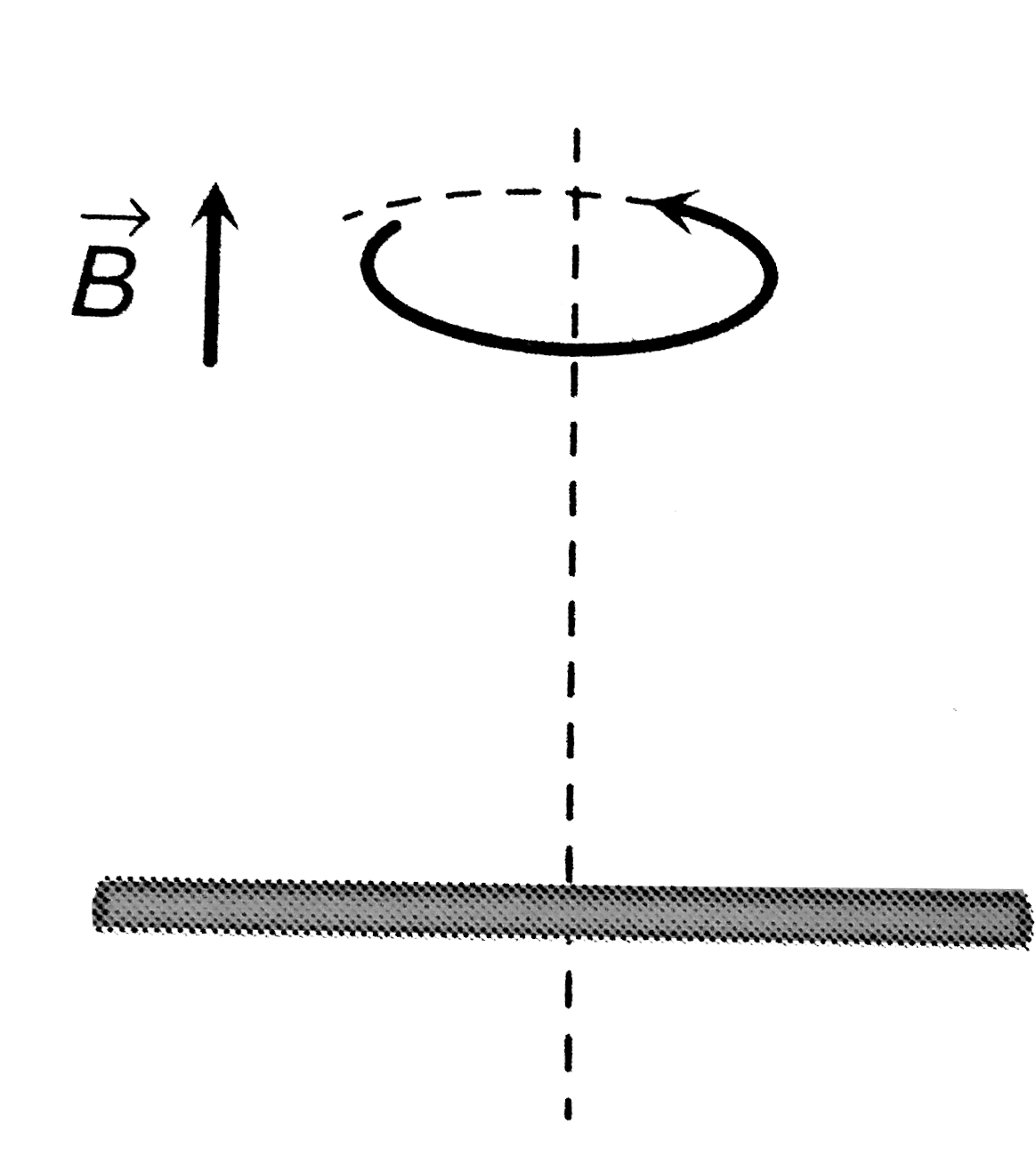A uniform metallic rod rotates about its perpendicular bisector with constant angular speed. If it is heated uniformly to raise its temperature slightly, then
Its speed of rotation increases
Its speed of rotation decreases
Its speed of rotation remains same
its speed increases because its moment of inertia increases
The correct Answer is:B
When a metallic rod is heated, it expands. Its moment of inertia (I) about a perpendicular bisector increases. According to law of conservation of angular momentum, its angular speed (ω) decreases, since ω∝1I (according to law of conservation of angular momentum).
Similar Questions
A uniform metallic rod rotates about its perpendicular bisector with constant angular speed. If it is heated. If it is heater uniformly to raise its temperature slightly
View SolutionA uniform metallic rod rotates about its perpendicular bisector with constant angualr speed. If it is heated uniformly to raise its temperature slightly, then a) its speed of rotation increases b) its speed of rotation decreases c) its speed of rotation remains same d) its speed increases because its moment of inertia increases
View SolutionA uniform metallic rod rotates about its perpendicular bisector with constant angular speed If it is heated . If it is heater uniformly to raise its temperature slightly
View Solutionकोई एक समान धातु की छड़ अपने लंबवत् द्विभाजक के परितः एक समान कोणीय चल से घूर्णन करती है। यदि इसका थोड़ा ताप बढ़ने के लिए इसे एक समान तप्त करे तो इसकी
View Solutionएक एकसमान धात्विक छड़ नियत कोणीय चाल से लम्बवत् द्विभाजक के परितः घूर्णन करती है। यदि इसके ताप को थोड़ा-सा बढ़ाने के लिए इसे एकसमान रूप से गर्म किया जाये तो
View SolutionA conducting rod of length 2l is rotating with constant angular speed w about its perpendicular bisector. A uniform magnetic field B exists parallel to the axis of rotation. The e.m.f. induced between two ends of the rod is

View SolutionA conducting rod of length 2l is rotating with constant angular speed w about its perpendicular bisector. A uniform magnetic field B exists parallel to the axis of rotation. The e.m.f. induced between two ends of the rod is

View SolutionA rod of length l rotates with a small but uniform angular velocity omega about its perpendicular bisector. A uniform magnetic field of 0.3 T exists parallel to the axis of rotation. The potential difference between the two ends of the rod is
View Solution
